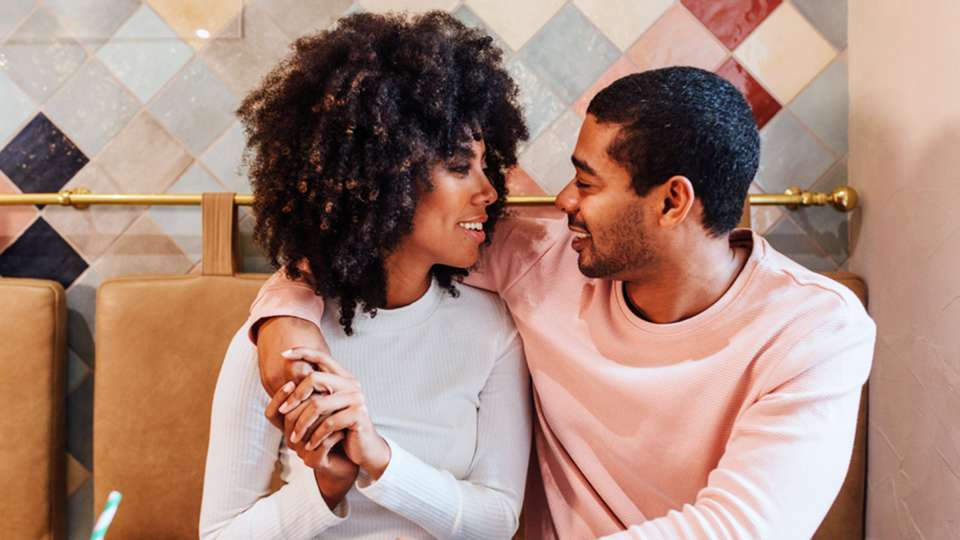
We know. Relationships can’t always be made of daintily scattered rose petals in the hallway, dreamy weekend getaways or steamy date nights in dark bars. More often, they are made of everyday moments: messy dishes to argue over, rogue kid socks to find, quick hugs in passing — with a bit of romance mixed in (hopefully).
There are some specific qualities (green flags) that professionals agree are present in a healthy and functioning relationship and some red flags that should alert you to a lousy one — and of course some yellow flags as well, that fall somewhere in between.
Relationships aren’t one size fits all
Every relationship looks different depending on the people — which is part of the beauty of partnerships.
According to Pepper Schwartz, PhD, emeritus professor of sociology at the University of Washington — and a relationship expert and co-author with Jessica Griffin of “Relationship Rx”, which comes out next month, there can be some leeway on what one couple would consider healthy and what another couple might not.
Relationship green flags that give the go-ahead
“There are certain boundaries and quality of life habits that some people feel are at the center of who they are and what they want, and a healthy relationship allows those core desires and core experiences to be satisfied,” says Schwartz.
To her, some of the most important elements of a healthy relationship include:
- You give each other the support, space and time to do things you love: Having a healthy partnership doesn’t mean you do everything together or have all the same interests. You should encourage each other to do the things that make each of you happy.
- Your gut has a good feeling about your relationship: You feel happy waking up next to your partner in the morning — grateful to have them in your life. “Some of the little things aren’t actually that little,” says Schwartz. Your gauge of your happiness is important and is a real barometer of what’s going on with the relationship.
- You should feel like your partner likes you as well as loves you: Having a solid friendship makes for a stronger and more loving romantic relationship.
- You should feel respected and listened to: Even if you don’t always agree about everything, you should feel safe sharing with your partner when you’re everything from distressed to overjoyed — and they should feel the same way about you.
“You have to feel like you can be your authentic self when you are with your partner and that they accept you for who you are," says Whitney Hellyer, a licensed clinical social worker and counseling program supervisor at Harborview Medical Center’s Abuse & Trauma Center.
Hellyer emphasizes that you and your partner should have each other’s backs both in public and in private — and demonstrate respect and admiration for one another.
Relationship yellow flags can be subtle
Somewhere between healthy and unhealthy lives the middle ground of relationships. This is a place where many relationships fall and where yellow flags can wave.
Many relationships can be mostly healthy but might have a few concerning attributes. Some of these may include feeling like you need to watch what you say around your partner or like you’re walking on eggshells because you don’t want to offend them. You must be able to be honest with your partner and have open communication to nurture a healthy bond.
Another yellow flag is if you feel like your partner isn’t proud of your accomplishments or happy for you when something good happens. They should be your biggest cheerleader, so if they aren’t supportive in that way, you both need to evaluate things.
And how do you evaluate those things, you might ask?
“I’m a big proponent of getting professional help, for yourself or as a couple,” says Schwartz.
Which might make you ask — isn’t talking to friends enough?
Not necessarily, says Schwartz. Though friends can be an incredible support system, they’re also your friends, which means they will only see the sides of the situation that you’ve told them — they won’t be able to look at things objectively and give you solid, unbiased advice. Also, friends can get tired of being your amateur therapist, and it can end up putting a strain on your relationship with them.
Plus, with the magic of the internet, finding therapy is much easier than it was in the past.
One more thing: It’s also important to mention disappointing relationships here, which can sometimes get lumped in with less healthy relationships. This kind of relationship — due to hardships that can happen with life, like illness, job loss or other unforeseen circumstances — can sometimes not look like the one you imagined for yourself. Sometimes your partner just can’t do the things you want them to, which can be disappointing but not necessarily unhealthy.
Recognizing relationship red flags
So, now that we’ve covered some of the green flags and the yellow flags in relationships — what about the red ones? Though we’ve already said that all relationships are different and can have varied definitions of “healthy,” certain distinct warning signs should always be taken seriously.
According to Hellyer, the biggest red flags are any physical or sexual violence (not surprising) and threatening and coercive behavior.
“Sometimes that can include threats of physical harm, but it can also be more about causing emotional harm — for example, sharing sensitive photos with others if you don’t comply, or threatening to harm themselves or something or someone else you care about,” Hellyer says.
She also notes verbal or psychological abuse (put-downs, name-calling, etc.) as huge red flags, along with controlling behavior: When your partner monitors who you’re spending time with, hacks into your email or accuses you of infidelity to justify their bad behavior.
In any instance where there is sexual or physical violence or threatening behavior, you need to approach the situation carefully. Often when a person is trying to leave an abusive relationship, the risk of violence increases because the abuser feels like they are losing control — which can cause them to escalate their dangerous behaviors.
“That’s when it is especially important to reach out to an agency or program that serves survivors of intimate partner violence,” says Hellyer. “These programs can help people plan for escalated risk and increase their likelihood of being able to stay safe when leaving an abusive relationship.”
Plus, they have advocates and other trained professionals who can provide free and confidential help.
The National Domestic Violence Hotline (1.800.799.7233), King County Domestic Violence Hotline (206.737.0242 or 1.877.737.0242) and Washington State Coalition Against Domestic Violence are all great resources to reach out to.
The most important thing to remember about relationships
Understanding the ins and outs of what makes relationships healthy can be complicated. But there is beauty in taking a close and honest look at your partnership and (as long as you don’t see the previously mentioned red flags) accepting it for its imperfections while also striving to make it better and healthier.
“One of the problems I see in relationships these days is that people want their partner to be everything, and if there’s even one category they’re not great in, they wonder, ‘How did I marry this person?’ You have to take a realistic approach to what any one person can be or do for you,” says Schwartz.
Healthy relationships aren’t about being perfect — they’re about listening to and respecting each other and striving to create a safe space for you both to grow. Of course, we hope there are a few rose petals thrown in every now and then, as well.

 Healthy ideas for your inbox
Healthy ideas for your inbox






